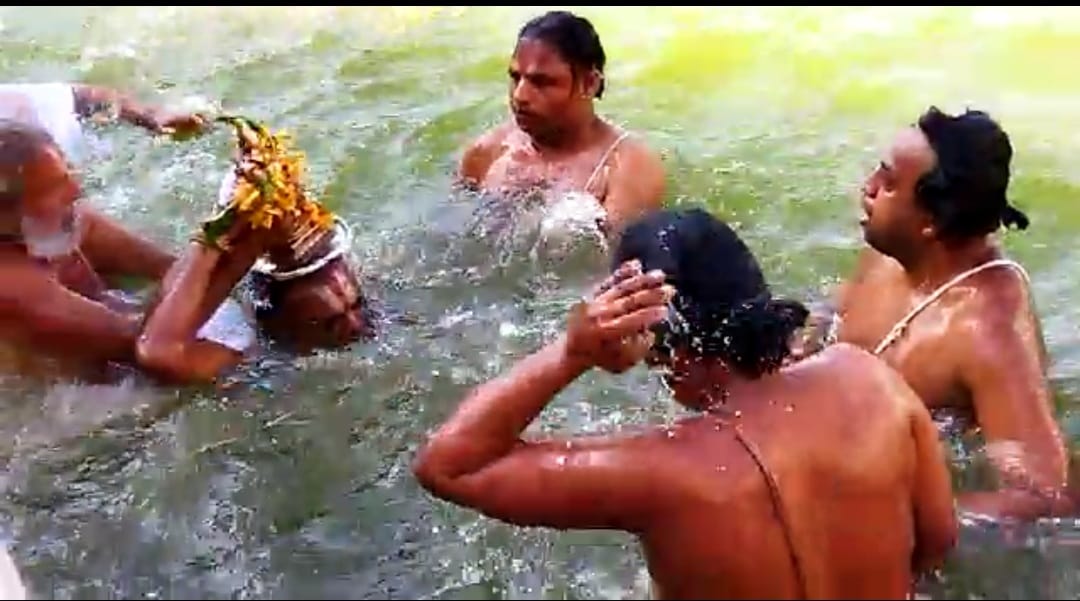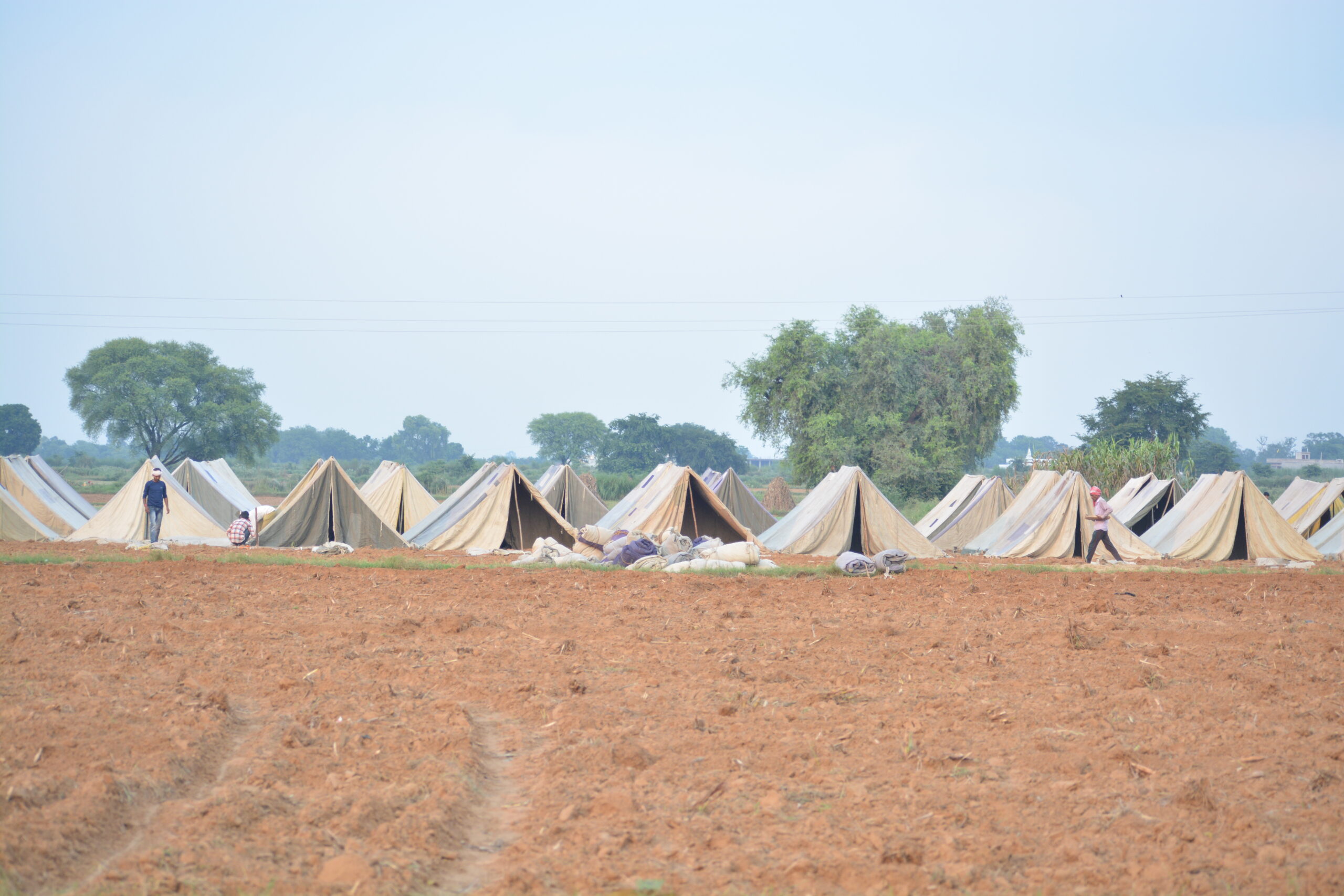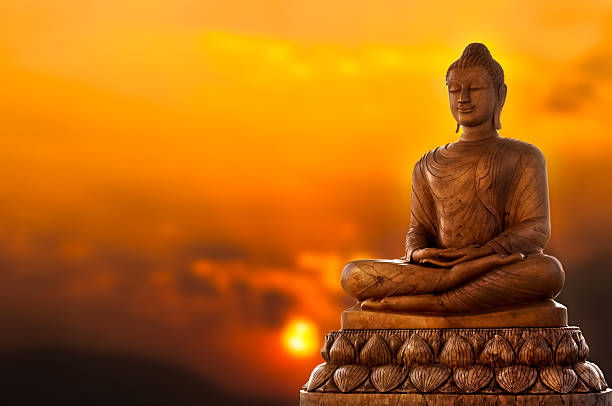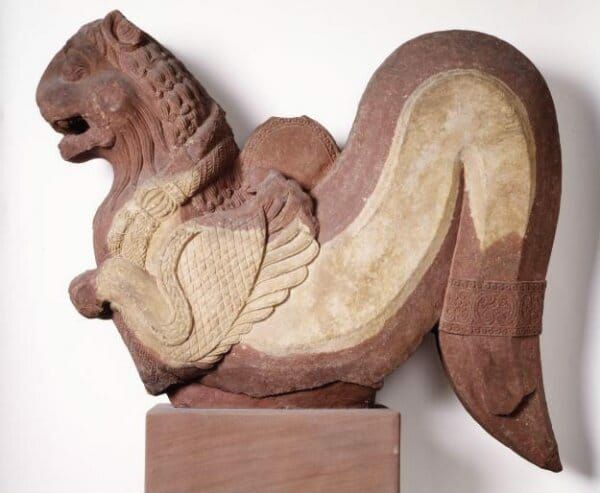Until 18 years back, Bhagwan Goda-Rangmannar’s abhishek was done with the sacred waters of the Yamuna on the river bank. Now it happens in the temple tank (Pushkarni). It seems blasphemous to say this, but the physical form of Shri Krishna’s ‘Patrani’ is not fit for His service anymore.
By Acharya Naresh Narayan
Vrindavan, 2022-04-12 (Vrindavan Today News): Rangji’s ten-day annual festival ‘Brahmotsavam’ concluded on 29 March. Like every year, on the day prior (28 March) Bhagwan Rangnath and Devi Goda went for the grand ritual bathing ceremony in the ‘Pushkarni’ (temple tank) after the morning ‘Shri Palki’. Well, this sentence needs a minor correction….or two perhaps! Like every year ‘for the last nearly 18 years’, Bhagwan Rangnath and Devi Goda went for the grand ritual bathing ceremony in the ‘Yamuna-swaroopini Pushkarni’ after the morning ‘Shri Palki’.
‘Yamuna-swaroopini Pushakrni’ because the physical Yamuna in the form it exists today in Braj-Vrindavan, is unfit for Rangji’s seva! And this calls for ‘major’ correction for us as a civilization, not a ‘minor’ one. It is an extremely disconcerting truth that Yamuna pollution has caused this 150-year-old sacred tradition to break. And yet it is not the only one.
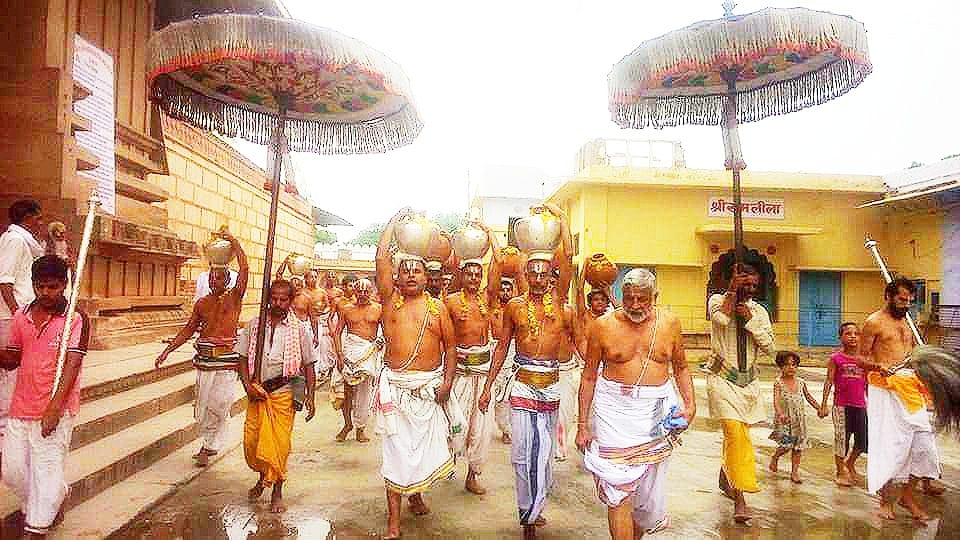
Many temples in Braj and outside, for which the Yamuna was a fundamental element of daily and special ‘seva’, had to discontinue their services due to alarming levels of pollution in the river. These include Rangji, Govind Dev, Radharaman, and Nathdwara’s Shrinathji to name a few. In fact, many people in Vrindavan used to perform daily puja of their personal deities with Yamuna Jal.
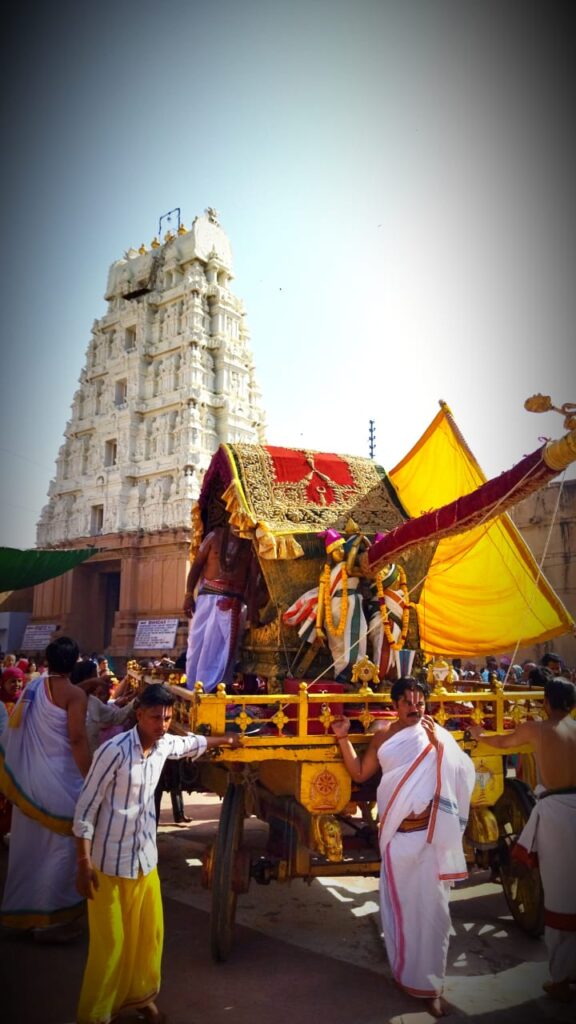
Coming back to Rangji, the temple boasts a lofty tradition of Yamuna worship which began nearly 4500 years ago with the avatar of Bhu Devi, Godamma or Andal as she is popularly known. Andal longed to obtain Krishna as her husband, and the only way she knew was to follow in the footsteps of the Braj Gopikas who worshipped Devi Katyayini and Devi Yamuna in Dwapar Yug for the fulfilment of their desire.
As travelling all the way to Braj was not feasible for her, Andal worshipped the Yamuna by invoking her in the temple tank (‘Pushakarni’) of the Vatapatrasayi Vishnu Temple in the southern town of Srivilliputtur (Tamil Nadu), where she lived. Srivilliputtur became her Vrindavan, the temple was Nandbhavan, and her friends were the Gopis. On the completion of the ‘vrata’, Bhagwan Shri Rangamannar appeared to her in a dream and married her. Andal merged into Him that very day.
The Shrivaishnav Sampradya celebrates her month-long vow as ‘Dhanurmaas’, of which early morning ‘Yamuna Snaan’ is the most essential element, in addition to the ‘Thiruppavais’ – a collection of 30 poems – one for each day – composed by Andal.
Even today, the Rangji temple area reverberates with the sounds of her transcendental hymns in the wee hours of morning during the months of December-January. But the Yamuna is not there. Even though Andal is now in Vrindavan, the river which granted her the highest of all desires, that of Krishna Bhakti, has to be invoked in the temple tank once again.
But it was not always so. Until 18 years back, Rangji temple followed the daily ritual which involved a retinue of priests heading to the Yamuna with complete paraphernalia comprising chatras, chadi-chamar, mashaal (two each),and two guards to bring water for Bhagwan Rangnath’s early morning abhishek. The tradition was instituted on the day the deity was consecrated in the temple.
During Dhanurmaas Godamma led the entourage accompanied by ‘Thiruppavai’ singing. She still does, but her ‘Yamuna snaan’ has now been restricted to ‘Yamuna Darshan’ alone.
Another special occasion linked to the Yamuna is ‘Brahmotsavam’, on the ninth day of which both Devi Goda and Shri Rangamannar are taken to the Yamuna on a splendid sawari (palanquin). Before the Yamuna met this deadly fate, the day used to be marked with grand rituals and festivities beginning with ‘snaan’. It may be difficult for those who have seen the Yamuna only in the present state, but the special ‘vigrahas’ of the deity actually took a dip in the river. The event was attended by hundreds of devotees every year. Now Shri Goda-Rangnath’s ‘sawari’ travels only as far as the temple’s ‘Pushkarni’.
Given the significance of the Yamuna in the Sampradaya, the aggrieved temple and priest community tried its best to save the tradition, devising alternative ways to obtain pure water for seva. The archaks used to dig a deep hole on the river bank at night, and cover with it stones to avoid any disturbance. Overnight, clean water would seep in and collect in the pit. This water was used for the temple rituals next morning. However, the practice could not be carried on for long due to animals and miscreants.
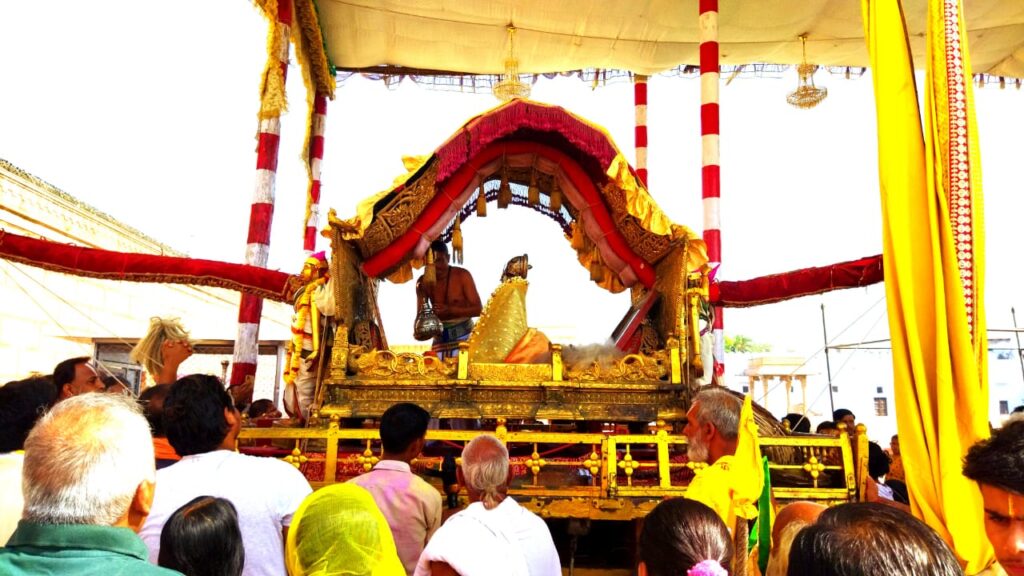
The Yamuna plays an inextricable role in the lilas and seva of Krishna, both of which are not only incomplete but impossible to conceive without her. This is true specifically of the Yamuna in Braj, where she is worshipped as the ‘Patrani’ – chief queen of Krishna. Her significance remains undiminished wherever His service is held in accordance with the principles of Braj Bhakti.
It is heartbreaking to see how despite its spiritual, ecological, and civilizational significance, the life and liberation-giving Yamuna is suffering this fate due to the apathy of the government and common public.


